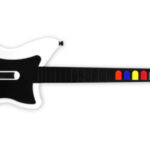Augmented chords bring a unique and often underutilized color to guitar music. Characterized by their dissonant and somewhat unsettling sound, they can inject a sense of tension, drama, or even exoticism into your playing. If you’re looking to expand your harmonic palette and add a distinctive flavor to your guitar skills, understanding Augmented Chords Guitar is a crucial step. This guide will delve into the theory behind augmented chords, explore practical shapes on the fretboard, and demonstrate how to effectively use them in your guitar playing.
Understanding the Basics of Augmented Chords
At its core, an augmented chord is a major triad that has been altered to create a heightened sense of tension. Let’s break down the fundamental elements:
What Defines an Augmented Chord?
The simplest way to define an augmented chord is to think of it as a major triad with a raised, or sharped, 5th. Recall that a major triad is built from the 1st, 3rd, and 5th degrees of a major scale. For instance, a C major chord consists of the notes C, E, and G.
To transform this into a C augmented chord (often written as Caug or C+), we simply take the 5th of the major triad (G in this case) and raise it by a semitone, or one fret on the guitar. This sharped 5th becomes G#. Therefore, the notes of a C augmented chord are C, E, and G#.
Essentially, we’re adding a semitone of tension by altering just one note in a familiar major chord. This small change creates a significant shift in the overall character of the chord.
Augmented Chord Structure: Stacked Major Thirds
Delving deeper into the structure, augmented triads are uniquely built from stacked major third intervals. This means the interval between each note in the chord is a major third.
Consider our C augmented chord again:
- From C to E (root to the 3rd) is a major third.
- From E to G# (3rd to the sharp 5th) is also a major third.
- And remarkably, from G# back up to C (sharp 5th to the root – an octave higher) is, again, a major third.
This consistent interval structure creates a fascinating musical property known as symmetry. This symmetry has practical implications for guitarists, as we’ll see later when exploring chord inversions and shapes across the fretboard.
The Sound of Augmented Tension
Playing a major chord immediately followed by its augmented counterpart reveals the characteristic tension that augmented chords possess. The raised 5th creates a dissonance that feels unresolved, yearning for resolution. This inherent tension is what makes augmented chords so effective in creating harmonic interest and movement in music.
They are often described as having an unstable, floating, or even slightly unsettling quality. This makes them ideal for moments of transition, creating dramatic build-ups, or adding a touch of the unexpected to chord progressions.
Notation and Common Names
You’ll encounter augmented chords written in a few different ways:
- aug: Caug, Daug, Eaug, etc. This is a very common and clear notation.
- +: C+, D+, E+. This is a shorter, symbolic representation.
- augmented: C augmented, D augmented, E augmented. The full word form, less common in chord charts but used in written analysis.
Understanding these notations will help you quickly identify augmented chords in sheet music, chord diagrams, and musical texts.
Exploring Augmented Chord Shapes on Guitar
Now, let’s bring the theory to the fretboard and explore practical shapes for playing augmented chords on guitar.
Open Position Augmented Triads
Starting with open positions, we can adapt familiar major chord shapes to create augmented versions. Remember, we’re focusing on sharping the 5th.
[Insert image: https://www.fretjam.com/images/xaugmented-chord-chart-intervals.png.pagespeed.ic.OLqNh4rf0Y.png]
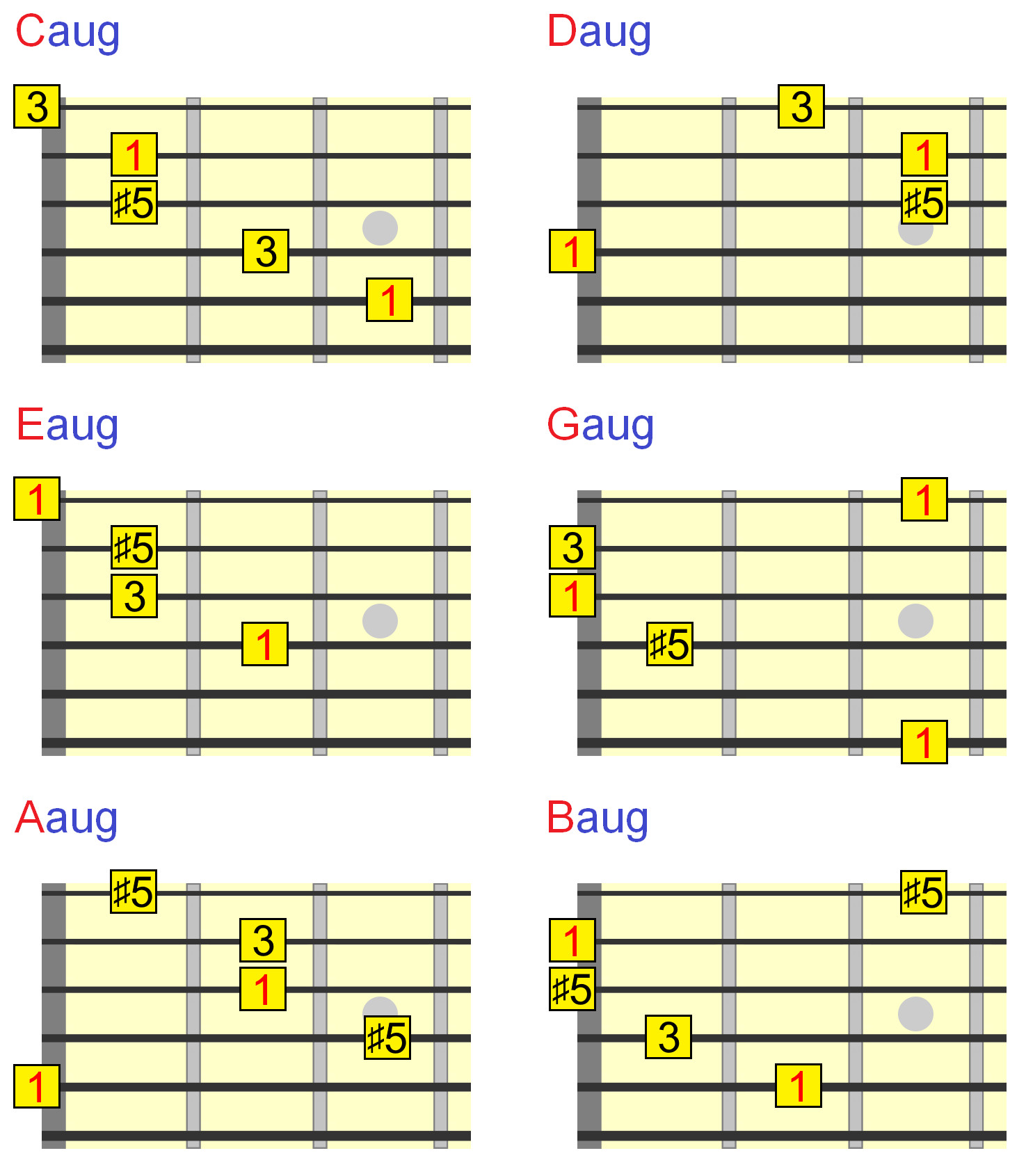{width=1475 height=1691}
This first chart illustrates the interval structure of open position augmented chords. You can see the root (1), major 3rd (3), and augmented 5th (♯5) clearly marked for each chord shape.
[Insert image: https://www.fretjam.com/images/xaugmented-chord-chart-fingering.png.pagespeed.ic.WUfJF9BYA_.png]
{width=1475 height=1691}
This fingering chart provides practical finger placements for common open position augmented chords. Practice transitioning between these augmented shapes and their corresponding major chord shapes to train your ear and finger memory for the subtle but impactful change the augmented 5th creates.
Suspended 2nd Augmented Variant (sus2 aug)
For a slightly different flavor, you can explore the suspended 2nd augmented chord. This variation replaces the major 3rd of the augmented chord with a major 2nd interval. Essentially, we’re taking the major 3rd and moving it down two frets.
While still retaining the augmented 5th and the inherent tension, the sus2 augmented chord offers a unique, often described as “prettier” yet equally tense sound.
[Insert image: https://www.fretjam.com/images/xaugmented-sus2-chord-chart-fingering.png.pagespeed.ic.DZcOnhe-cm.png]
{width=1475 height=545}
Experiment with these sus2 augmented shapes to add further harmonic variety to your augmented chord vocabulary.
Augmented 7th Chords
To intensify the tension even further, we can add a 7th to the augmented triad. The most common augmented 7th chord adds a minor 7th (♭7) to the augmented triad (1 3 ♯5 ♭7).
This chord is often written as aug7, +7, or 7#5 (e.g., Caug7, C+7, C7♯5).
[Insert image: https://www.fretjam.com/images/xaugmented-7th-chord-chart-intervals.png.pagespeed.ic.tn0nEnG1cN.png]
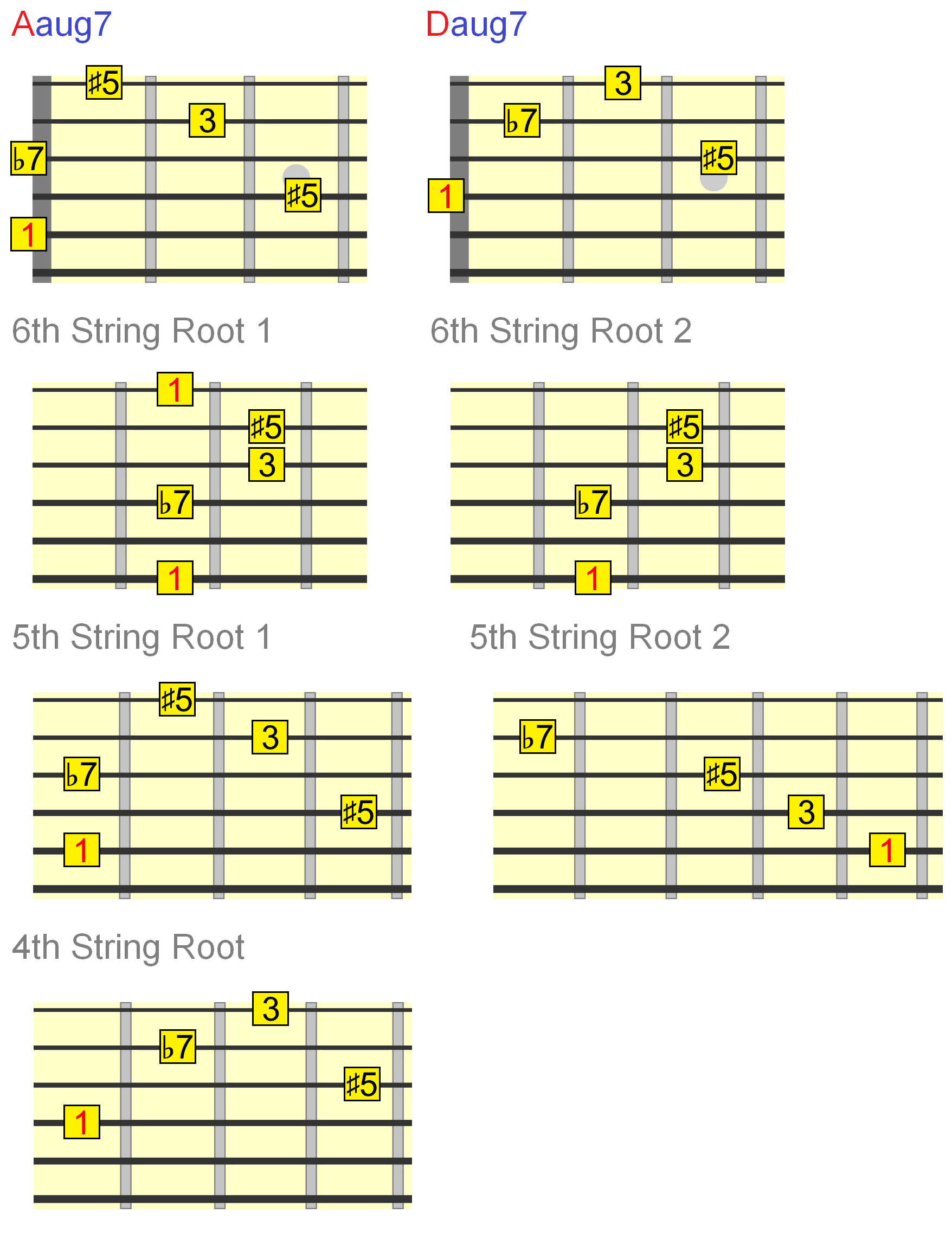{width=1756 height=2286}
This chart displays the intervals that constitute augmented 7th chords, clearly showing the root, major 3rd, augmented 5th, and the added minor 7th.
[Insert image: https://www.fretjam.com/images/xaugmented-7th-chord-chart-fingering.png.pagespeed.ic.mjOAjHgGUH.png]
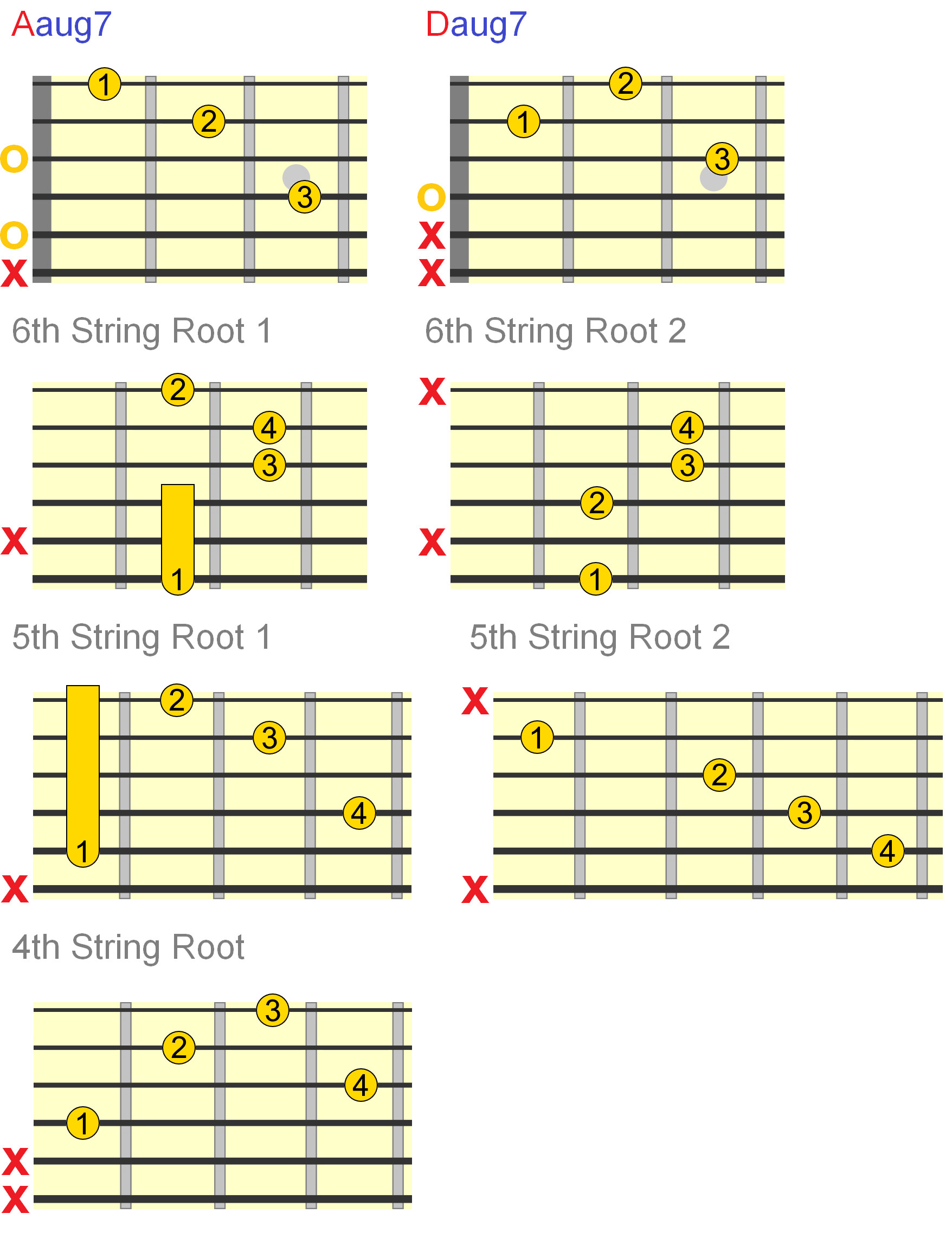{width=1756 height=2286}
This fingering chart offers shapes for augmented 7th chords. These chords are particularly potent in creating harmonic movement and are frequently found in genres like jazz and blues.
Unlocking Symmetry: Augmented Chord Inversions Across the Neck
Remember the symmetrical structure of augmented triads, built from stacked major thirds? This symmetry allows us to play inversions of augmented chords by simply moving shapes up or down in major third intervals (4 frets on the guitar).
[Insert image: https://www.fretjam.com/images/xopen-caug-cut.png.pagespeed.ic.Y7yqP0NnOg.png]
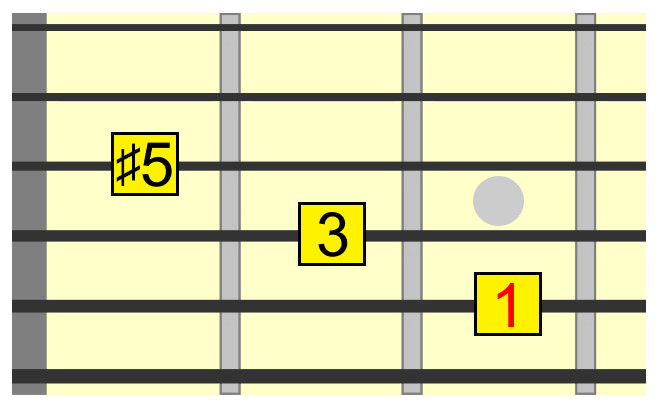{width=660 height=408}
This image highlights a simplified C augmented shape, visually demonstrating the major 3rd interval between each note in the chord.
Moving this shape up a major third (4 frets) results in a different inversion of the same augmented chord. It’s still a C augmented, but with a different note in the bass and a different voicing.
[Insert image: https://www.fretjam.com/images/xaug-symmetry-2.png.pagespeed.ic.UCRZlZ6YLA.png]
{width=1847 height=394}
This illustrates how moving the augmented shape by major thirds creates different inversions, all voicing the same fundamental augmented chord. This is a powerful tool for creating smooth voice leading and harmonic movement.
To navigate augmented chords across the entire neck, learning an arpeggio pattern based on major thirds is incredibly useful.
[Insert image: https://www.fretjam.com/images/xaaug-full-pattern.png.pagespeed.ic.op-7DnGuav.png]
“
This full arpeggio pattern provides a roadmap for playing augmented chords anywhere on the neck. By dividing this pattern into groupings of three strings and understanding the major 3rd relationship, you can easily find different inversions and voicings for any augmented chord.
[Insert image: https://www.fretjam.com/images/xaug-ex15.png.pagespeed.ic.SUqiZ7FDb2.png]
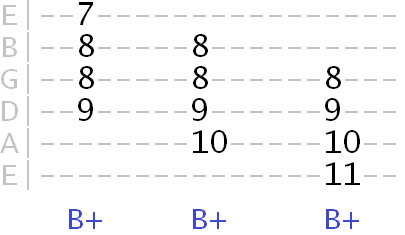{width=405 height=235}
This image shows examples of augmented chord shapes derived starting from the root on the 4th string.
[Insert image: https://www.fretjam.com/images/xaug-ex16.png.pagespeed.ic.ggZa3tRTuK.png]
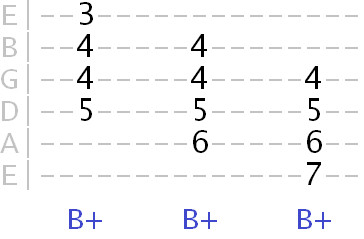{width=364 height=239}
Similarly, this image shows shapes starting with the root on the 3rd string. Mastering these symmetrical movements and arpeggio patterns unlocks immense flexibility in voicing and playing augmented chords in any musical context.
Using Augmented Chords in Progressions
Understanding how augmented chords function within chord progressions is key to utilizing them effectively in your guitar playing. They often serve specific harmonic roles, adding tension and directing movement towards resolution.
Augmenting the Tonic Chord (Iaug)
In a major key, the tonic chord (I chord) is typically major and represents the home base. However, composers often use an augmented tonic chord (Iaug) to create instability and momentarily disrupt the sense of resolution, often before moving to the IV chord.
In the key of C major, a common progression demonstrating this is:
Cmaj – Caug – Fmaj (or Fmaj7)
[Insert image: https://www.fretjam.com/images/xaug-ex1.png.pagespeed.ic.ZosvxeWQmL.png]
{width=368 height=229}
Another common technique involves creating a chromatic movement from the 5th of the tonic chord upwards. For example, in D major:
Dmaj – Daug – D7 – Gmaj
This progression uses the augmented tonic to create a chromatic ascending line from the 5th of the D chord (A) through A# (the augmented 5th) to B (the 6th of D) and finally C (the flat 7th of D7). This creates a very unsettled and dramatic effect.
The Augmented V Chord (Vaug)
The dominant chord (V chord) in a key naturally carries harmonic tension, as it pulls strongly towards the tonic. Using an augmented V chord (Vaug) amplifies this tension even further.
In A major, the V chord is E major. The Vaug chord is Eaug. Listen to how Eaug increases the anticipation before resolving back to Amaj:
Eaug – Amaj
[Insert image: https://www.fretjam.com/images/xaug-ex3.png.pagespeed.ic.i3hi51fKMt.png]
{width=803 height=231}
Similarly, in D major, the Vaug chord is Aaug:
Aaug – Dmaj
Sometimes, a 9th is added to the augmented V chord (Vaug9) to further enrich its color and tension.
More complex progressions can also effectively utilize the Vaug chord. In G major:
Gmaj – D7 – Daug – Em – Am – D7 – Gmaj
[Insert image: https://www.fretjam.com/images/xaug-ex5.png.pagespeed.ic.AgPBkgYUGj.png]
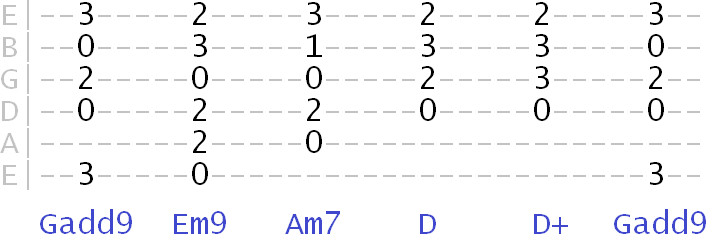{width=721 height=252}
Recognizing the 1-5 relationship in various keys is crucial for effectively using the Vaug chord. In blues music, this relationship is fundamental. Here are some key examples:
- A (1) – E (5)
- B (1) – F♯ (5)
- C (1) – G (5)
- D (1) – A (5)
- E (1) – B (5)
- F (1) – C (5)
- G (1) – D (5)
Augmented Chords in Minor Keys
Augmented chords function similarly in minor keys, retaining their tension-creating role. The Vaug chord in a minor key (e.g., Eaug in A minor) creates the same heightened sense of anticipation before resolving to the minor tonic (Am).
Am – Eaug – Am
Augmented 7th Chords in Progressions
Augmented 7th chords (aug7, 7#5) can be used in the V position like augmented triads, but their added minor 7th introduces even more complexity and harmonic possibilities.
Beyond the V chord, augmented 7th shapes can be used in other positions to create unique colors and transitions. When not in the V position, and depending on the musical context, an augmented 7th chord can sometimes be interpreted as a 7th flat 13th chord (7♭13), as the ♯5 and ♭13 are enharmonically equivalent. In this broader sense, it’s often considered an altered dominant 7th chord.
Augmented 7th Chords as the III, and VI chords
In major keys, augmented 7th chords can be effective substitutions for the III chord (major key) or VI chord (major key).
In G major, the III chord is naturally B minor (Bm). However, we can substitute a B7#5 (or B7♭13) to add harmonic interest:
Gmaj – B7alt – Em – Cmaj
[Insert image: https://www.fretjam.com/images/xaug-ex7.png.pagespeed.ic.3lA1nzeSGg.png]
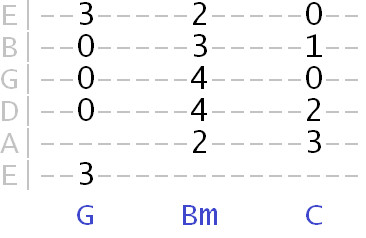{width=366 height=238}
[Insert image: https://www.fretjam.com/images/xaug-ex8.png.pagespeed.ic.lzXyIkZfi2.png]
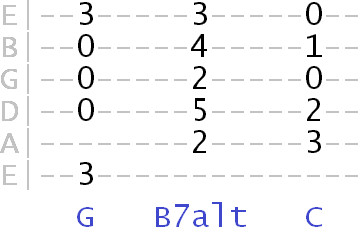{width=364 height=236}
Another common technique is moving from the IV chord down a half step to an augmented/altered III chord. In D major:
Dmaj – Gmaj – G#7alt – Amaj
[Insert image: https://www.fretjam.com/images/xaug-ex9.png.pagespeed.ic.N6izMRVy6m.png]
{width=481 height=255}
Similarly, the VI chord in a major key (minor by default) can be replaced by an augmented/altered 7th shape. In C major, the VI chord is Am.
[Insert image: https://www.fretjam.com/images/xaug-ex10.png.pagespeed.ic.soNyh10bii.png]
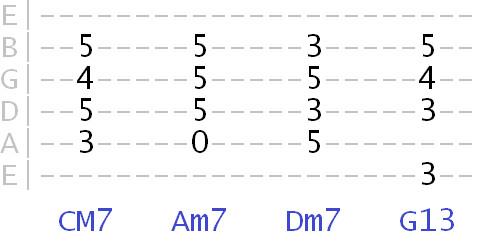{width=479 height=241}
[Insert image: https://www.fretjam.com/images/xaug-ex11.png.pagespeed.ic.5DCMo8nmg0.png]
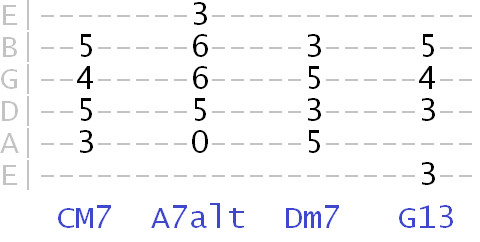{width=480 height=242}
While the VI chord often follows the I chord, the augmented/altered VI chord can also follow other chords, such as the III chord in E major:
Em – B7 – C7alt – F#m7 – B7 – Em
Augmented Major 7th Chords (M7#5)
Finally, let’s touch upon the augmented major 7th chord (M7#5 or +M7), a particularly dissonant chord often found in jazz. It’s essentially an augmented triad with a major 7th (1 3 ♯5 ♮7). You can also think of it as a major 7th chord with a sharp 5th.
Like the augmented triad, the augmented major 7th can be used to destabilize a major tonic chord. A common movement is from the augmented major 7th tonic to the IV chord:
CM7#5 – Fmaj7
[Insert image: https://www.fretjam.com/images/xaug-ex18.png.pagespeed.ic.jlzopiBsMz.png]
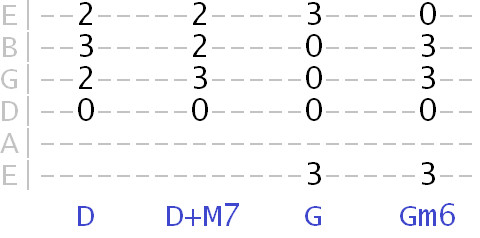{width=480 height=238}
It can also be used as a tonic chord for a uniquely unresolved and ambiguous feeling.
Experiment and Discover
The uses of augmented chords discussed here are just starting points. The true power of these chords lies in experimentation. Don’t be afraid to try augmented shapes in various positions and progressions beyond these examples. Let your ear be your guide, and you’ll discover countless ways to infuse your guitar playing with the distinctive tension and color of augmented chords. Keep practicing and exploring the fascinating world of augmented chords guitar!


